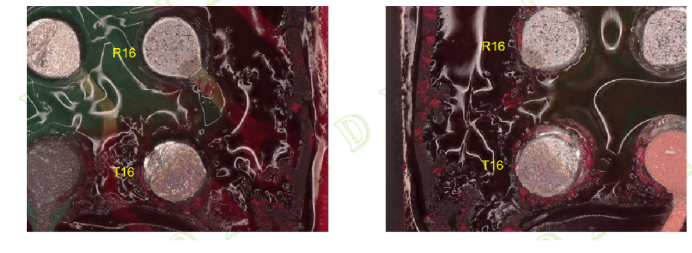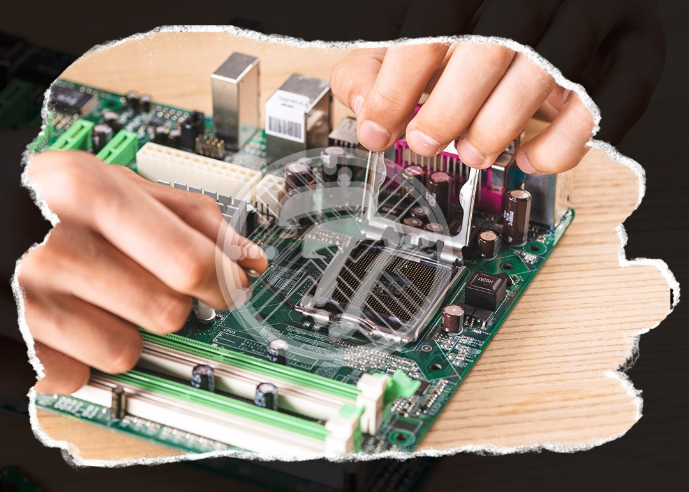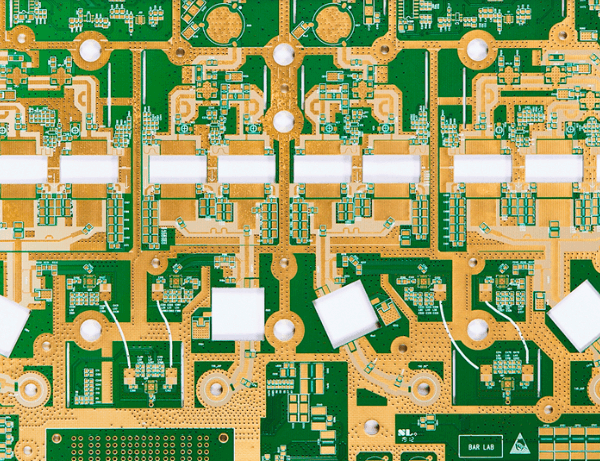Flex rigid pcb stackup
Benefits Of Flex Rigid PCB Stackup In Modern Electronics
Flex rigid PCB stackup has emerged as a pivotal innovation in the realm of modern electronics, offering a multitude of benefits that cater to the evolving demands of contemporary technology. This hybrid circuit board, which combines flexible and rigid substrates, provides a unique solution that addresses the limitations of traditional rigid PCBs and flexible circuits when used independently.
The integration of these two types of substrates into a single board not only enhances the performance and reliability of electronic devices but also introduces several advantages that are indispensable in today’s high-tech applications.
One of the primary benefits of flex rigid PCB stackup is its ability to save space and reduce weight.
In an era where miniaturization is paramount, especially in consumer electronics, medical devices, and aerospace applications, the compact nature of flex rigid PCBs is invaluable. By allowing for three-dimensional configurations, these boards enable designers to fold, twist, and bend the circuits to fit into tight spaces without compromising functionality. This spatial efficiency translates into lighter and more compact devices, which is a critical factor in the development of portable and wearable technology.
Moreover, the enhanced reliability and durability of flex rigid PCB stackup cannot be overstated.
The combination of flexible and rigid layers provides a robust structure that can withstand mechanical stresses and environmental factors better than traditional PCBs. The flexible sections can absorb shocks and vibrations, reducing the risk of damage to the electronic components. This resilience is particularly beneficial in applications subjected to harsh conditions, such as automotive and industrial environments, where reliability is paramount.
In addition to physical robustness, flex rigid PCBs offer superior electrical performance.
The seamless integration of flexible and rigid sections minimizes the need for connectors and interconnects, which are potential points of failure and sources of signal loss. This reduction in interconnects not only enhances signal integrity but also simplifies the overall design and assembly process. Consequently, the streamlined design leads to improved electrical performance, which is crucial for high-speed and high-frequency applications.
Another significant advantage of flex rigid PCB stackup is the potential for cost savings in the long run.
Although the initial design and manufacturing costs may be higher compared to traditional PCBs, the overall cost-effectiveness becomes apparent when considering the reduced need for additional components, connectors, and assembly steps. The integration of multiple functionalities into a single board reduces the complexity of the assembly process, leading to lower labor costs and fewer potential points of failure. This efficiency in production and maintenance ultimately results in a more economical solution for manufacturers.
Furthermore, the versatility of flex rigid PCB stackup makes it an ideal choice for a wide range of applications.
From consumer electronics like smartphones and tablets to advanced medical devices and sophisticated aerospace systems, the adaptability of these hybrid boards allows for innovative designs that meet specific requirements. The ability to customize the stackup to suit various applications ensures that designers can optimize performance, reliability, and cost-effectiveness for each unique project.
In conclusion, the benefits of flex rigid PCB stackup in modern electronics are manifold, encompassing space and weight savings, enhanced reliability and durability, superior electrical performance, cost-effectiveness, and versatility. As technology continues to advance and the demand for more compact, reliable, and high-performing electronic devices grows, the adoption of flex rigid PCBs is poised to become increasingly prevalent, driving innovation and efficiency in the electronics industry.

Design Considerations For Flex Rigid PCB Stackup
Designing a flex rigid PCB stackup requires meticulous attention to detail and a comprehensive understanding of the unique characteristics and requirements of both flexible and rigid circuit boards. The integration of these two types of PCBs into a single unit offers numerous advantages, including enhanced reliability, reduced space, and improved performance. However, achieving these benefits necessitates careful consideration of several design factors.
To begin with, material selection is paramount in the design of a flex rigid PCB stackup.
The materials used must be compatible with both the flexible and rigid sections of the board. Typically, polyimide is chosen for the flexible layers due to its excellent thermal stability and mechanical properties, while FR4 is commonly used for the rigid sections. The choice of materials directly impacts the board’s flexibility, durability, and overall performance. Therefore, it is crucial to select materials that can withstand the environmental conditions and mechanical stresses the PCB will encounter during its lifecycle.
Another critical aspect is the layer configuration.
The stackup must be designed to ensure optimal electrical performance and mechanical integrity. This involves determining the number of layers, the arrangement of signal, power, and ground layers, and the placement of vias. The goal is to minimize signal interference and crosstalk while maintaining the structural integrity of the board. Proper layer configuration also helps in managing impedance control, which is essential for high-speed signal transmission.
Thermal management is another vital consideration in the design of flex rigid PCB stackups.
The combination of flexible and rigid sections can create thermal challenges, as different materials have varying thermal expansion coefficients. This can lead to mechanical stress and potential failure points if not properly managed. Effective thermal management strategies, such as the use of thermal vias, heat sinks, and appropriate material selection, are essential to ensure the longevity and reliability of the PCB.
In addition to thermal management, mechanical considerations play a significant role in the design process.
The flexible sections of the PCB must be designed to withstand repeated bending and flexing without compromising the integrity of the electrical connections. This requires careful attention to the bend radius, the placement of components, and the routing of traces. The bend radius should be kept as large as possible to reduce stress on the flexible material, and components should be placed away from bend areas to prevent damage during flexing.
Furthermore, manufacturability is a key factor in the design of flex rigid PCB stackups.
The design must be optimized for efficient and cost-effective manufacturing processes. This includes considering the capabilities and limitations of the fabrication and assembly processes, such as the minimum trace width and spacing, the precision of layer alignment, and the methods used for bonding the flexible and rigid sections. Collaboration with the PCB manufacturer during the design phase can help identify potential issues and ensure that the design is manufacturable within the desired specifications.
Lastly, testing and validation are essential steps in the design process.
Prototyping and rigorous testing help identify any potential issues and ensure that the PCB meets the required performance and reliability standards. This includes electrical testing, mechanical testing, and environmental testing to simulate real-world conditions.
In conclusion, designing a flex rigid PCB stackup involves a complex interplay of material selection, layer configuration, thermal management, mechanical considerations, manufacturability, and testing. By carefully addressing these factors, designers can create robust and reliable flex rigid PCBs that meet the demands of modern electronic applications.

Common Challenges In Flex Rigid PCB Stackup And How To Overcome Them
Flex rigid PCB stackup is a sophisticated technology that combines the benefits of both flexible and rigid circuit boards, offering enhanced performance and design versatility. However, the integration of these two distinct types of PCBs into a single stackup presents several challenges that designers and manufacturers must address to ensure optimal functionality and reliability. Understanding these common challenges and implementing effective strategies to overcome them is crucial for the successful deployment of flex rigid PCBs.
One of the primary challenges in flex rigid PCB stackup is managing the mechanical stress that arises from the differing material properties of the flexible and rigid sections.
The flexible part of the PCB is designed to bend and flex, while the rigid part is meant to remain static. This disparity can lead to stress concentration at the junctions where the flexible and rigid sections meet, potentially causing delamination or cracking. To mitigate this issue, designers can employ gradual transitions between the flexible and rigid areas, using fillets or curved traces to distribute stress more evenly. Additionally, selecting materials with compatible thermal expansion coefficients can help reduce mechanical stress during thermal cycling.
Another significant challenge is ensuring signal integrity across the flex rigid PCB stackup.
The transition between flexible and rigid sections can introduce impedance discontinuities, which can degrade signal quality and lead to electromagnetic interference (EMI). To address this, careful attention must be paid to the design of the trace layout and stackup configuration. Implementing controlled impedance traces and maintaining consistent trace widths and spacing can help preserve signal integrity. Furthermore, incorporating ground planes and shielding techniques can minimize EMI and crosstalk, ensuring reliable signal transmission.
Thermal management is also a critical concern in flex rigid PCB stackup design.
The combination of flexible and rigid materials can result in uneven heat distribution, potentially leading to hotspots and thermal stress. Effective thermal management strategies include the use of thermal vias, heat sinks, and thermal interface materials to dissipate heat efficiently. Additionally, optimizing the placement of heat-generating components and ensuring adequate ventilation can help maintain a stable thermal environment.
Manufacturing flex rigid PCBs presents its own set of challenges, particularly in terms of process complexity and yield rates.
The intricate nature of flex rigid stackups requires precise alignment and lamination techniques to ensure proper bonding between the flexible and rigid layers. Any misalignment or defects during the manufacturing process can compromise the integrity of the PCB. To overcome these challenges, manufacturers can employ advanced fabrication techniques such as laser direct imaging (LDI) and automated optical inspection (AOI) to achieve high precision and detect defects early in the production process. Additionally, thorough testing and quality control measures are essential to ensure the reliability of the final product.
Finally, cost considerations play a significant role in the design and manufacturing of flex rigid PCBs.
The complexity of the stackup and the need for specialized materials and processes can drive up costs. To manage expenses, designers can optimize the stackup configuration to minimize material usage and reduce the number of layers. Collaborating closely with manufacturers during the design phase can also help identify cost-saving opportunities without compromising performance.
In conclusion, while flex rigid PCB stackup offers numerous advantages, it also presents several challenges that must be carefully managed. By addressing mechanical stress, ensuring signal integrity, implementing effective thermal management, employing advanced manufacturing techniques, and considering cost implications, designers and manufacturers can overcome these challenges and achieve reliable, high-performance flex rigid PCBs.
Innovations In Flex Rigid PCB Stackup Technology
Flex rigid PCB stackup technology has undergone significant advancements in recent years, driven by the increasing demand for more compact, reliable, and versatile electronic devices.
This innovative technology combines the best features of both flexible and rigid circuit boards, offering a hybrid solution that meets the complex requirements of modern electronic applications. As the electronics industry continues to evolve, the importance of understanding the latest innovations in flex rigid PCB stackup technology cannot be overstated.
One of the most notable innovations in this field is the development of advanced materials that enhance the performance and durability of flex rigid PCBs.
These materials include high-temperature polyimides, which provide excellent thermal stability and mechanical strength, and low-loss dielectrics, which improve signal integrity and reduce electromagnetic interference. By incorporating these advanced materials into the stackup, manufacturers can produce PCBs that are not only more robust but also capable of supporting higher frequencies and faster data transmission rates.
In addition to material advancements, the design and manufacturing processes for flex rigid PCBs have also seen significant improvements.
For instance, the use of laser drilling technology has enabled the creation of smaller and more precise vias, which are essential for high-density interconnect (HDI) designs. This precision allows for more complex and compact layouts, ultimately leading to smaller and lighter electronic devices. Furthermore, advancements in automated optical inspection (AOI) and X-ray inspection technologies have enhanced the quality control processes, ensuring that each PCB meets the stringent standards required for high-reliability applications.
Another key innovation in flex rigid PCB stackup technology is the integration of embedded components.
By embedding passive and active components within the PCB layers, designers can achieve a higher level of miniaturization and functionality. This approach not only reduces the overall size and weight of the device but also improves its electrical performance by minimizing parasitic inductance and capacitance. Moreover, the integration of embedded components can lead to cost savings by reducing the number of discrete components and simplifying the assembly process.
The advent of 3D printing technology has also had a profound impact on the development of flex rigid PCBs.
3D printing allows for the rapid prototyping and production of complex PCB designs that would be difficult or impossible to achieve using traditional manufacturing methods. This capability enables designers to experiment with new stackup configurations and optimize their designs for specific applications. Additionally, 3D printing can reduce lead times and lower production costs, making it an attractive option for both prototyping and small-scale production runs.
As the demand for wearable technology, medical devices, and other compact electronic applications continues to grow, the need for innovative flex rigid PCB stackup solutions will only increase.
To meet these demands, researchers and manufacturers are continually exploring new materials, design techniques, and manufacturing processes. For example, the development of stretchable and conformal PCBs, which can be integrated into clothing or other flexible substrates, represents a promising area of research that could revolutionize the way electronic devices are designed and used.
In conclusion, the innovations in flex rigid PCB stackup technology are driving the electronics industry forward, enabling the creation of smaller, more reliable, and more versatile devices. By leveraging advanced materials, precision manufacturing techniques, embedded components, and 3D printing, manufacturers can produce PCBs that meet the ever-evolving demands of modern electronic applications. As these technologies continue to advance, the potential for new and exciting applications will only expand, paving the way for a future where electronic devices are seamlessly integrated into every aspect of our lives.






